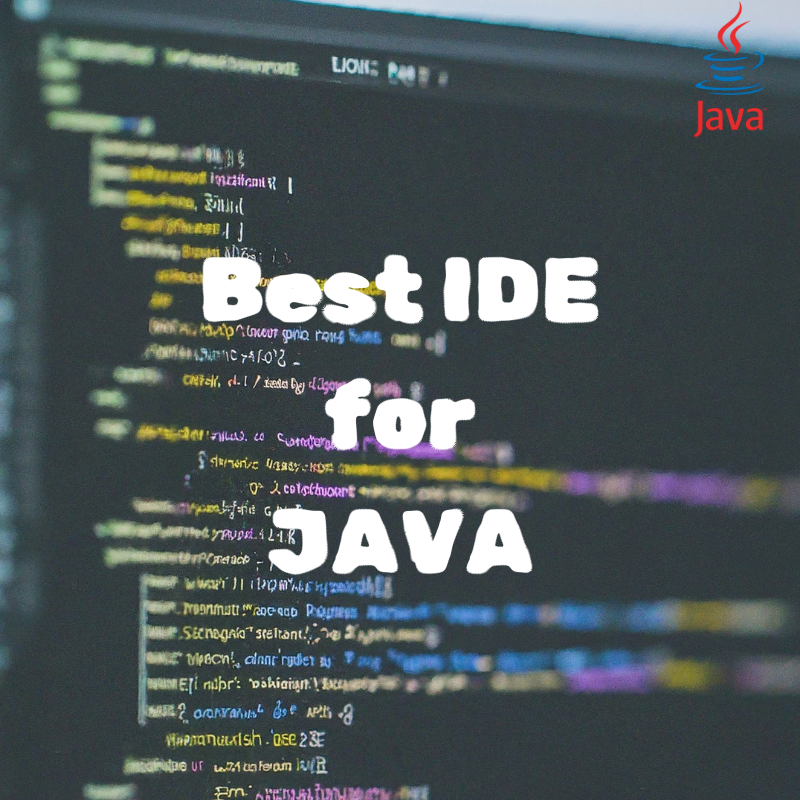Forging your path as a Java developer requires the right tools at your disposal. An Integrated Development Environment (IDE) acts as your digital workbench, providing an arsenal of features to streamline your coding process, elevate your productivity, and ultimately, empower you to craft exceptional Java applications.
This comprehensive guide dives deep into the top 5 IDEs specifically designed to propel your Java development journey. We’ll explore their strengths, weaknesses, ideal use cases, and provide valuable insights to help you select the IDE that perfectly aligns with your development style and project needs.
The Power of a Feature-Rich IDE:
Before delving into specific options, let’s establish the core functionalities a robust Java IDE offers:
- Code Completion and Editing: Intelligent code completion suggests relevant code snippets, function calls, and variable names as you type, accelerating development and reducing errors. Powerful code editing features like syntax highlighting and code formatting improve readability and maintainability.
- Refactoring Tools: Effortlessly restructure your codebase without sacrificing functionality. Refactoring tools can rename variables, extract methods, and improve code organization, making your code cleaner and more efficient.
- Debugging Tools: Identify and eliminate bugs efficiently. Debuggers allow you to step through code line by line, inspect variables, and set breakpoints to pinpoint issues and resolve them swiftly.
- Project Management: Manage your project files, folders, and dependencies effortlessly. Most IDEs offer built-in project management features that help you organize your codebase, navigate through files, and manage dependencies between libraries and frameworks.
- Version Control Integration: Seamlessly integrate with version control systems like Git for code versioning and collaboration. This allows you to track changes, revert to previous versions, and collaborate effectively with other developers.
The Top Contenders: Unveiling the Best Java IDEs
Now, let’s introduce the top 5 IDEs that have earned the respect and trust of Java developers worldwide:
IntelliJ IDEA (by JetBrains): The Feature-Packed Powerhouse
This is my personal favorite and what I use as a software developer at Amazon. IntelliJ IDEA reigns supreme as the most popular Java IDE, and for good reason. It boasts a robust code completion engine powered by AI-driven context analysis, ensuring highly relevant suggestions as you write. Refactoring tools are second to none, allowing you to effortlessly restructure code and maintain a clean codebase. IntelliJ IDEA offers unparalleled support for various Java frameworks and libraries, making it the go-to choice for complex projects that leverage established frameworks like Spring or Hibernate. The vast ecosystem of plugins further empowers you to customize the IDE to your specific workflow preferences, integrating with popular testing frameworks and build tools.
Pros:
- Intelligent code completion with AI-assistance
- Powerful refactoring tools
- Extensive framework and library support
- Vast plugin ecosystem for customization
- Excellent debugging tools
Cons:
- Free Community Edition has limitations compared to the paid Ultimate Edition
- Can be resource-intensive on older machines
Ideal for: Experienced Java developers, complex projects with multiple frameworks, developers seeking extensive customization options.
Eclipse: The Open-Source Classic
Eclipse is a mature and open-source IDE that has been a cornerstone in the Java development community for over two decades. Highly customizable with a broad range of plugins, Eclipse caters to a wide range of developer preferences. While the initial setup and configuration might seem complex for beginners, the extensive documentation and large user base ensure you’ll find help and resources readily available. Eclipse offers robust Java development tools, integrates seamlessly with various web development frameworks, and provides project management features to organize your codebase.
Pros:
- Free and open-source
- Highly customizable with a vast plugin ecosystem
- Extensive documentation and community support
- Integrates seamlessly with web development frameworks
Cons:
- Initial setup can be complex for beginners
- Interface might feel dated compared to modern IDEs
Ideal for: Open-source enthusiasts, developers comfortable with customization, projects requiring integration with web development frameworks.
Apache NetBeans: Lightweight Champion
Apache NetBeans is another free and open-source IDE known for its user-friendly interface and lightweight resource consumption. NetBeans offers a streamlined development experience without compromising on core functionalities. It provides robust Java development tools, integrates with various web development frameworks, and excels in Git support for version control. NetBeans is a great choice for developers working on older machines or those who prefer a less cluttered IDE environment.
Pros:
- Free and open-source
- User-friendly interface with lightweight resource usage
- Integrates seamlessly with web development
Cons:
- Limited Plugin ecosystem compared to other IDEs.
- Startup Time: Opening large projects or starting NetBeans classic might take longer compared to some modern IDEs that have been optimized for faster loading times
- Dated Interface: The classic NetBeans version might have a user interface that feels dated compared to modern IDEs with more sleek and streamlined designs.
BlueJ: The Ideal Launchpad for Beginners
While not as feature-rich as the previous contenders, BlueJ holds a special place in the hearts of many Java developers – it was their gateway to the world of Java programming. BlueJ is a free, lightweight IDE specifically designed for introducing students and beginner programmers to object-oriented programming concepts in Java. Its intuitive interface features a visual representation of classes and objects, making it easier to grasp complex concepts like inheritance and polymorphism. BlueJ offers basic editing and debugging functionalities, perfect for beginners to practice writing their first Java programs and experiment with object-oriented principles.
Pros:
- Free and lightweight
- Ideal for beginners learning Java and object-oriented programming
- User-friendly interface with visual representation of classes and objects
Cons:
- Limited features compared to professional IDEs
- Not suitable for complex development projects
Ideal for: Absolute beginners learning Java, introductory programming courses
Oracle JDeveloper: The Oracle Ecosystem Champion
Oracle JDeveloper is a free IDE from Oracle that excels in developing applications for the Oracle database and Java EE platform. JDeveloper streamlines development by offering drag-and-drop functionality for web application creation, visual editing tools, and built-in support for Oracle technologies like Oracle databases and WebLogic Server. If you’re primarily working within the Oracle ecosystem and leveraging Oracle-specific technologies, JDeveloper provides a compelling solution that integrates seamlessly with your development environment.
Pros:
- Free and feature-rich for Oracle development
- Drag-and-drop development for web applications
- Built-in support for Oracle technologies
Cons:
- Limited to Oracle development stack
- Might not be suitable for general-purpose Java development
Ideal for: Developers working within the Oracle ecosystem and using Oracle databases or WebLogic Server.
Choosing the IDE That Aligns with You

Selecting the perfect IDE boils down to understanding your specific needs, experience level, and project requirements. Here are some key factors to consider when making your decision:
- Features: Does the IDE offer the functionalities you need for your project type? For instance, if you’re working on a complex enterprise application with multiple frameworks, robust refactoring tools and extensive library support become crucial.
- Learning Curve: How comfortable are you with the initial setup and learning the IDE’s functionalities? Beginner-friendly options like BlueJ or NetBeans offer a gentler learning curve, while feature-rich options like IntelliJ IDEA might require some investment in upfront learning.
- Cost: While most popular Java IDEs offer free versions with essential features, some, like IntelliJ IDEA’s Ultimate Edition, have paid tiers with additional functionalities. Consider your budget and the value proposition each IDE offers.
- Performance: Can your system handle the resource requirements of the IDE? Lightweight options like NetBeans are ideal for older machines, while feature-rich options like IntelliJ IDEA might demand more processing power.
- Community and Support: Does the IDE have a large and active user community? A strong community translates to readily available resources, tutorials, and assistance when you encounter challenges.
Beyond the Top 5: Exploring Additional Options
The Java development landscape offers a plethora of IDEs beyond the ones we’ve covered. Here are a few more to consider:
- JEdit: A powerful text editor with a plugin architecture that allows you to customize it into a functional Java IDE.
- ThetaIDE: A cloud-based IDE that allows you to code from any device with a web browser, perfect for remote collaboration.
- jGRASP: A lightweight IDE with a focus on static code analysis and educational purposes.
The Final Word: Embrace the Perfect Fit
The ideal Java IDE empowers you to write cleaner, more maintainable code, streamline your development workflow, and ultimately, unlock your full potential as a Java developer. By carefully considering the factors mentioned above and exploring the strengths and weaknesses of each IDE, you’ll be well-equipped to select the perfect companion for your Java development journey. Remember, there’s no single “best” IDE – the optimal choice depends on your unique preferences and project requirements. Experiment with different options, leverage the power of online communities, and happy coding!






